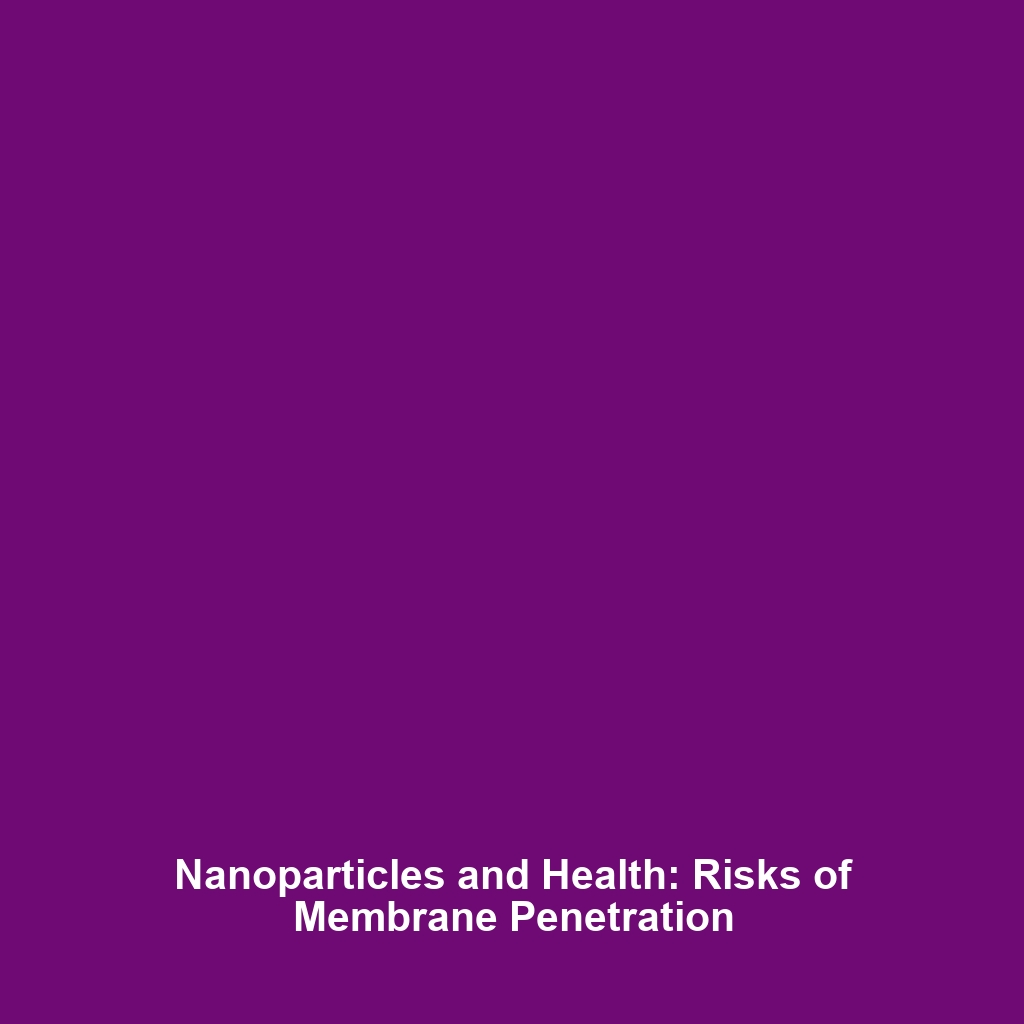Nanoparticles Can Penetrate Biological Membranes: Potential Health Risks
Introduction
The emergence of advanced nanomaterials has revolutionized various fields, including medicine, electronics, and environmental science. However, one notable concern is the ability of nanoparticles to penetrate biological membranes, which raises significant health risks. Understanding these implications is crucial as the application of nanoparticles continues to expand. This article will delve into the various aspects of how nanoparticles interact with biological systems, the potential hazards, and the advances being made in this vital area of research.
Key Concepts
Understanding Nanoparticles
Nanoparticles are ultrafine materials less than 100 nanometers in size. Their unique properties, such as increased reactivity and ability to interact at the cellular level, are what enable them to penetrate biological membranes. This penetration can lead to unintended consequences within living organisms, necessitating a closer examination of these advanced materials.
Biological Membranes and Their Significance
Biological membranes serve as protective barriers for cells, regulating the entry of substances. However, when nanoparticles penetrate these membranes, they may disrupt cellular integrity and function. This phenomenon raises questions about safety and efficacy, particularly in medical applications utilizing nanotechnology.
Applications and Real-World Uses
While the risks associated with nanoparticle penetration into biological membranes are concerning, there are also numerous significant applications in the realm of advanced nanomaterials:
- Drug Delivery Systems: Targeted delivery of medications using nanoparticles can enhance treatment efficacy but demands rigorous safety assessments.
- Diagnostic Tools: Nanoparticles are employed in imaging and diagnostic tests, with potential exposure risks that must be monitored.
- Cosmetics: Many cosmetic products utilize nanoparticles for their beneficial properties, highlighting the need for consumer awareness regarding safety.
Current Challenges
The growing presence of nanoparticles in various sectors brings forth numerous challenges, including:
- Risk Assessment: Determining the toxicological impact of nanoparticle interactions with biological membranes remains complex and under-researched.
- Regulatory Standards: The absence of standardized testing and regulation for nanoparticles complicates their safety validation.
- Public Awareness: There is a lack of understanding among the general public regarding the potential health risks of nanoparticles.
Future Research and Innovations
Ongoing research is crucial for mitigating risks associated with nanoparticles. Future innovations may include:
- Smart Nanomaterials: Development of nanoparticles designed to target specific cells, minimizing unintended penetration.
- Advanced Characterization Techniques: New methods for observing nanoparticle behavior in biological systems will enhance risk assessment.
- Biodegradable Nanoparticles: Innovations in creating biodegradable nanomaterials aim to reduce long-term health risks.
Conclusion
The potential health risks posed by nanoparticles penetrating biological membranes highlight the need for comprehensive research and informed regulation in the field of advanced nanomaterials. Understanding these dynamics is essential for leveraging the benefits of nanoparticles while safeguarding public health. Further investigation into the long-term effects of these materials is warranted, paving the way for safer applications. For more insights on nanotechnology, consider exploring related topics on nanomaterials and their implications.
